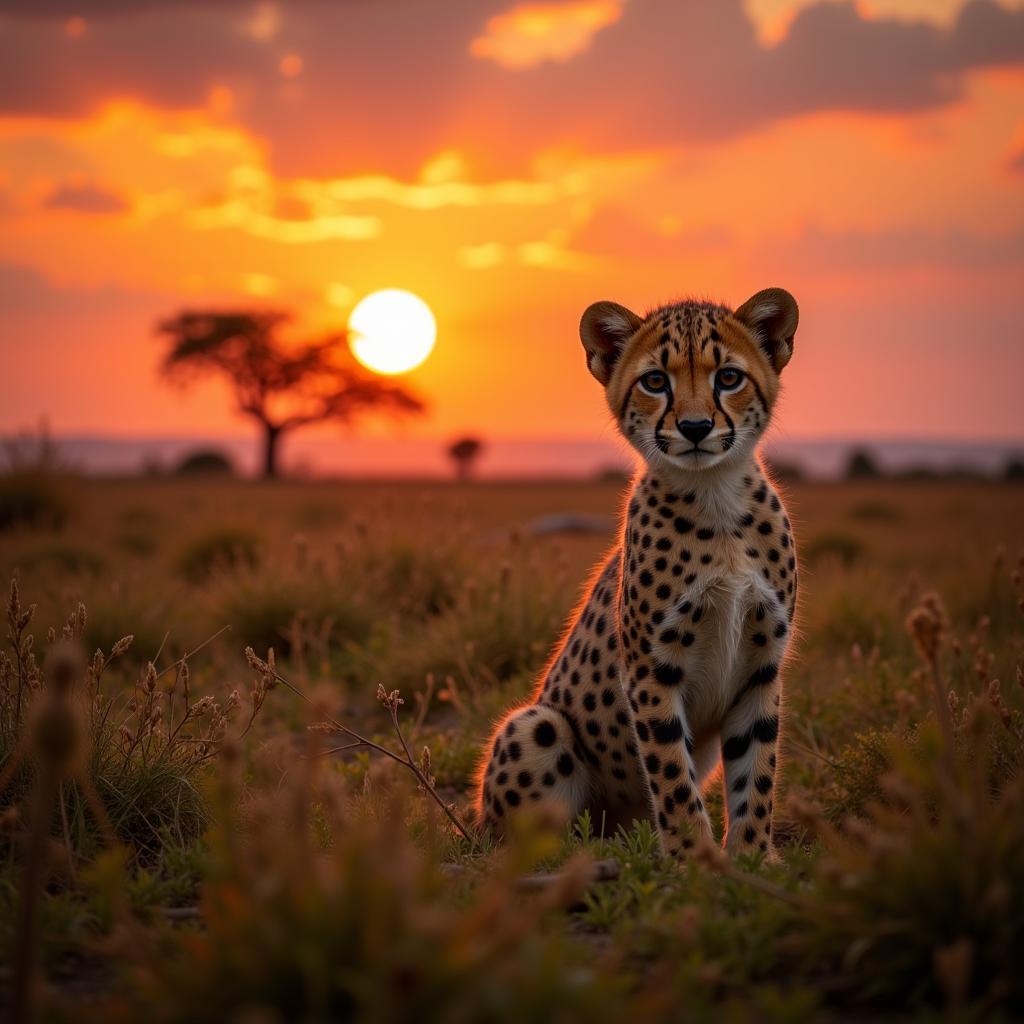African Cheetah to India: A New Beginning?
The relocation of the African Cheetah To India marks a significant moment in conservation efforts, attempting to reintroduce a species declared extinct in the country over 70 years ago. This ambitious project raises crucial questions about ecological impact, adaptation challenges, and the long-term survival of these majestic creatures.
A Historic Return: The African Cheetah in India
The African cheetah, Acinonyx jubatus, once roamed freely across the Indian subcontinent. However, due to hunting and habitat loss, they were declared extinct in 1952. The current initiative, a collaboration between India and several African nations, aims to re-establish a viable cheetah population in India’s Kuno National Park. This translocation project, while exciting, presents many challenges. One can learn more about the African cheetah relocation to India by visiting this website.
The introduction of African cheetahs to prowl Indian forests is a bold step. While the Asiatic cheetah is functionally extinct, this reintroduction using the closely related African subspecies offers a glimmer of hope. The long-term vision is to establish a self-sustaining population, contributing to global cheetah conservation and restoring a lost piece of India’s natural heritage. You can find more information about African cheetahs to prowl Indian forests on this site.
Challenges and Opportunities: Adapting to a New Home
The cheetahs face a number of hurdles in their new environment. Adapting to the Indian climate and ecosystem, navigating potential conflicts with other predators like leopards and dholes, and establishing territories are just some of the challenges. Successful integration will require meticulous monitoring and management.
Furthermore, ensuring ample prey availability is critical for their survival. Kuno National Park offers a suitable habitat with a healthy population of ungulates like chital and blackbuck, which should provide a steady food source. The hope is that these African cheetahs will thrive and help restore balance to the ecosystem.
The Long View: Conservation and the Future of the Cheetah
The reintroduction project represents a major milestone in global cheetah conservation. By establishing a new population in India, the project aims to reduce the species’ vulnerability to extinction. This venture highlights the importance of international cooperation in preserving biodiversity. It also emphasizes the need for continuous monitoring, research, and adaptive management strategies.
 The Future of African Cheetahs in India
The Future of African Cheetahs in India
“The relocation of the African cheetah to India is not just about bringing back a lost species,” explains Dr. Zara Mtwangi, a wildlife biologist specializing in African cheetah conservation. “It’s a crucial step toward diversifying the gene pool and ensuring the long-term survival of these incredible animals.”
“This project signifies a deep commitment to conservation and underscores the importance of international collaboration in protecting our planet’s biodiversity,” adds Dr. Adebayo Olajide, an ecologist with decades of experience in African wildlife management.
Conclusion: A Journey of Hope for the African Cheetah in India
The translocation of the African cheetah to India holds immense promise for conservation efforts. This complex endeavor offers a glimmer of hope for the future of this endangered species. While the road ahead is filled with challenges, the collaborative approach and commitment to long-term monitoring provide reasons for optimism. The success of this project could serve as a model for future reintroduction efforts worldwide. This ambitious initiative, bringing the African cheetah to India, aims to restore a missing piece of India’s ecological puzzle.
FAQ
- Why were African cheetahs chosen for reintroduction to India?
- What are the main challenges facing the reintroduced cheetahs?
- How will the success of the project be measured?
- What is the role of local communities in this project?
- How can the public support cheetah conservation efforts?
- What other conservation projects are underway in India?
- What is the long-term vision for the cheetah population in India?
For further insight into the African savanna, consider exploring this African savanna map. Learn more about the rich cultural heritage of Africa with these African chess pieces.
Need assistance? Contact us at Phone: +255768904061, Email: kaka.mag@gmail.com, or visit us at Mbarali DC Mawindi, Kangaga, Tanzania. We offer 24/7 customer support.

